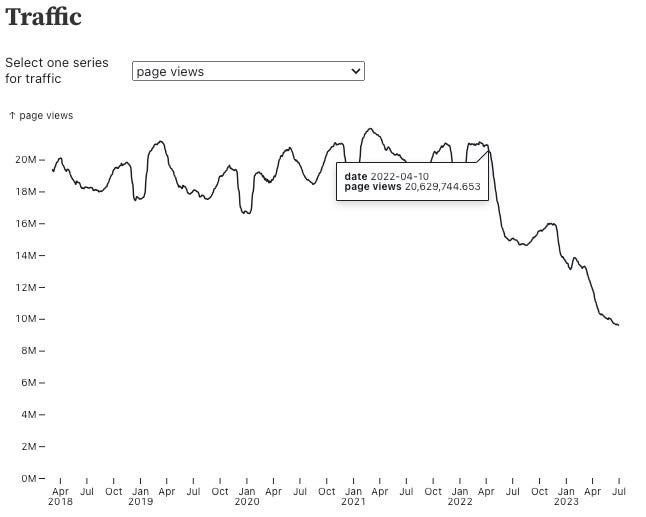The ROI of Continuous Merge
Plus, why pull requests should be even smaller than we thought, crashing BuzzFeed, DORA’s business blindspot, and Stack Overflow hits back at AI.
On this week’s episode of Dev Interrupted, co-host
and Ben Lloyd Pearson, LinearB’s Director of Developer Relations, detail the evolution of Continuous Merge and the tool behind it, gitStream. Joining the conversation is Nik LeBlanc, VP of Engineering at DevCycle.Nik shares the ways his team is using gitStream to streamline code reviews and offers practical advice for anyone looking to implement the tool on their own team. He also explores the somewhat controversial practice of splitting up and reshuffling engineering teams, a strategy that DevCycle has used to great effect. Nik finds that this practice helps balance teams, manage diverse knowledge bases, and de-risk the organization.
Conor and Ben wrap up the conversation by casting an eye on the future, focusing on the potential and direction of gitStream.
“There's a lot of attention being paid to PRs and how long they sit. It's become an important part of a team's working agreements to discuss how long they're willing to let a PR sit before it gets reviewed.”
Episode Highlights:
(2:50) Splitting and reorganizing dev teams
(9:20) How DevCycle is leveraging tooling to enable positive change
(14:50) Why teams are paying "a lot more attention" to PRs
(17:00) Nik's thoughts on DORA and shipping
(21:20) Threads & socials to follow
(23:35) Ben & Conor breakdown their convo with Nik
(27:30) Applying estimated time to review to PRs
(31:30) gitStream integrations
(32:30) The future of gitStream
The Download
The Download is engineering leadership content we’re reading, watching, and attending that we think you might find valuable.
1. Is 50 Lines the Ideal PR Size?
We’ve already discussed how the top 10% of engineering teams keep their pull requests small. According to the research team at Graphite, though, pull requests should be even smaller than the 105 lines found in the white paper “What Metrics Make Engineering Teams Elite.”
Read: The Ideal PR is 50 Lines Long
2. What it’s Like to Crash Buzzfeed
Our favorite rite of passage in engineering? Screwing up. The bigger screw-up, the better… as long as it improves how you lead other engineers. Plum Ertz spoke to Dev Interrupted about experiencing what is usually nightmare No. 1 for devs: Crashing the whole company.
This week’s Download is sponsored by “The Continuous Merge Guide to Merge Standards: A Free Guide To The Merge Standards That Empower Policy-As-Code In Elite Orgs.”
The Continuous Merge Guide to Merge Standards covers where CI/CD falls short, the importance of establishing merge standards on your team, and how LinearB workflow automation can help.
Inside you'll find:
A breakdown of Continuous Merge philosophy and its many benefits
13 of our favorite merge standards that enforce quality and boost efficiency
Tactical advice on how to implement merge standards on your team
3. What your business isn’t getting from DORA
DORA metrics - deployment frequency, lead time for changes, mean time to recovery, and change failure rate - were revolutionary in helping engineering managers get a grip on their teams’ workflow. They have been less than revolutionary and often used incorrectly in helping engineering managers connect their orgs to the broader company. LinearB’s CEO and co-founder, Ori Keren, sat down with DevOps Digest to outline how the smartest CTOs and VPs are going beyond DORA right now.
Read: What Our Industry Is Getting Wrong About DORA Metrics
4. Get to know OverflowAI
The existential threat AI plays to StackOverflow is probably bigger than any other company in the engineering space. After months of seeing developers abandon their once-favorite resource (see the site’s traffic crash on the cart below), StackOverflow is responding with OverflowAI.
Read: Announcing OverflowAI







It's fascinating to see how teams are evolving their code review practices and leveraging tools to drive positive change.